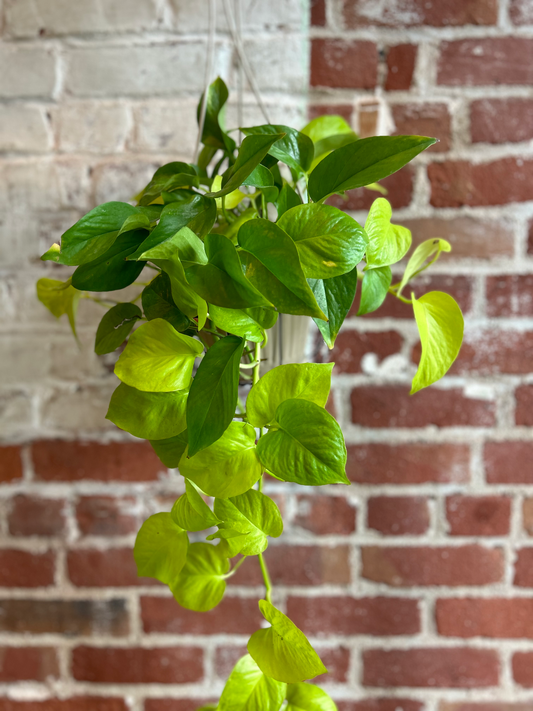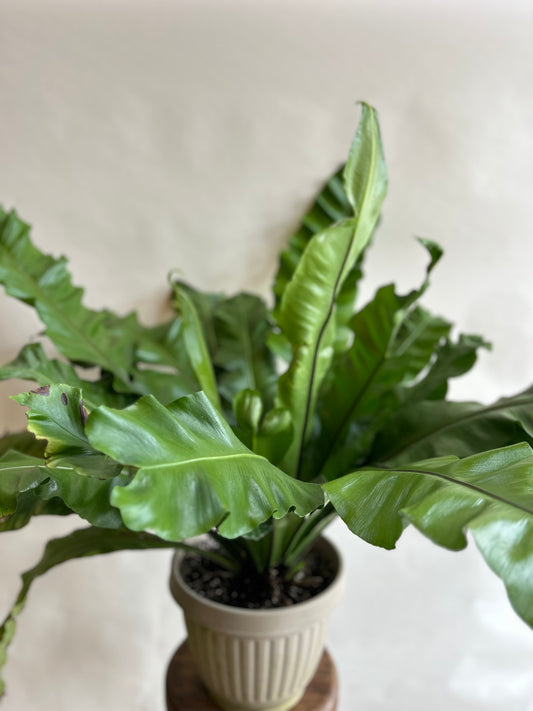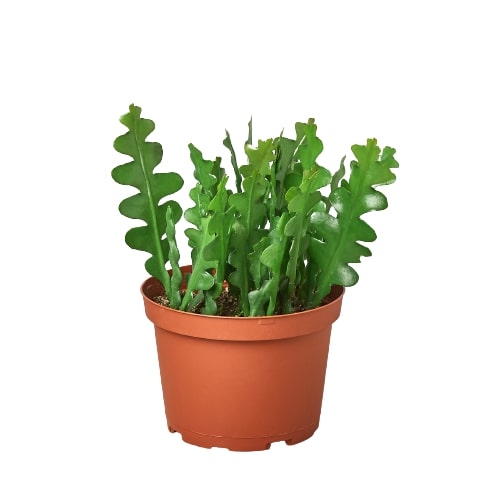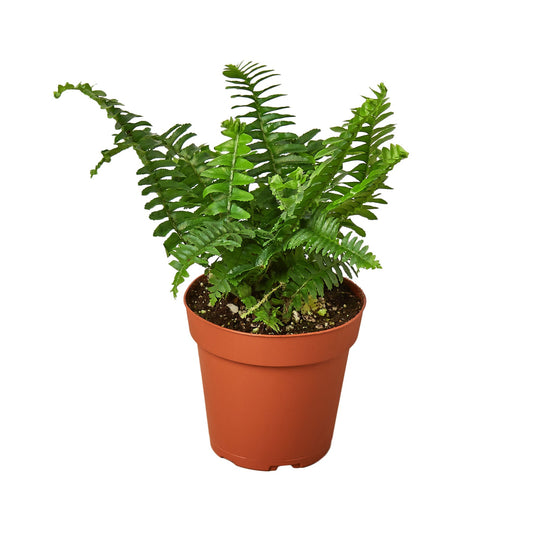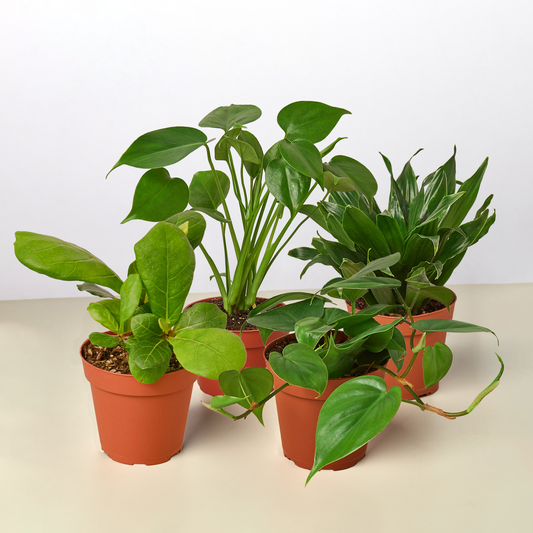Do Rubber Trees Bloom? A Guide to Rubber Tree Flowers
Cafe Planta Team
Rubber trees, or Ficus elastica, are popular houseplants known for their glossy leaves and ability to thrive with minimal fuss. But have you ever wondered if these green beauties can produce flowers? It’s a question that piques the curiosity of many plant lovers.
This article will unravel the mystery of rubber tree blooms. We'll explore whether these plants produce flowers, what these flowers look like, and how you can care for your rubber tree to support its health and vitality. So, let’s get started and learn about the fascinating aspects of rubber tree flowers!
Do Rubber Trees Bloom?
The short answer is yes, rubber trees do bloom, but it's not something you’re likely to witness in your living room. In their natural habitat, which is the tropical regions of Southeast Asia, rubber trees can produce small, inconspicuous flowers. These blooms are often hidden by the plant's large leaves and are not particularly eye-catching, unlike the vibrant flowers you might find on other tropical plants.
The flowers of the rubber tree are not designed to be showy. They’re actually quite subtle, blending in with the plant's overall structure. It's a bit like nature's own version of camouflage. These flowers are primarily pollinated by wasps, which is why they don’t need to attract pollinators with bright colors or strong fragrances. So, while rubber trees do flower, the blooms aren't the main attraction.
Interestingly, rubber trees grown as houseplants rarely, if ever, bloom. The conditions inside your home—such as light, humidity, and temperature—are usually quite different from those in their natural environment. This difference means that while your rubber tree might grow tall and leafy, it probably won’t produce any flowers. But don't worry! The lush, shiny leaves are more than enough to keep your rubber tree looking stunning.
Why Don’t Indoor Rubber Trees Bloom?
The lack of blooms on indoor rubber trees can be attributed to a handful of environmental factors. Firstly, lighting plays a crucial role in a plant's ability to flower. In the wild, rubber trees receive bright, indirect sunlight filtered through the canopy of taller trees. Indoors, however, it can be challenging to replicate this exact light condition. Most homes don’t have the same intensity or duration of light that a tree in the wild would receive.
Moreover, indoor climates are often much drier than the humid environments that rubber trees are accustomed to. The drier air can stress the plant, diverting its energy from flower production to simply maintaining its leafy greenery. Also, the temperature fluctuations within a home, especially in climates that experience cold winters, can further inhibit flowering.
Additionally, rubber trees in nature have a symbiotic relationship with specific wasp species for pollination. Without these wasps, even if the plant produced flowers, they wouldn’t result in fruit or seeds. This interdependence is a marvel of nature but a tricky one to replicate indoors.
So, while your indoor rubber tree may not bloom, it’s not a reflection of your plant care skills. Focus on keeping the leaves healthy and vibrant, as this is the true beauty of rubber trees grown as houseplants.
What Do Rubber Tree Flowers Look Like?
For those curious about what these elusive flowers look like, imagine something quite understated. Rubber tree flowers are small, with a yellowish hue, and tend to grow in clusters tucked away under the leaves. They're not designed to stand out, as their primary goal is to facilitate pollination by their wasp partners rather than attract humans or other creatures.
The flowers themselves are not what you’d consider traditional blooms. They lack the large, colorful petals seen in many garden flowers. Instead, they have a more utilitarian design, perfectly suited to their ecological role. The flowers have tiny openings that are just the right size for the wasps that pollinate them, showcasing a unique evolutionary partnership.
Given their subtlety, even if you were to encounter a blooming rubber tree in the wild, you might not immediately notice the flowers. They blend seamlessly with the rest of the plant, highlighting how different plant species have adapted their flowering strategies to suit their specific environments and pollinators.
How to Care for Your Rubber Tree
Even without flowers, rubber trees are a fantastic addition to any indoor space. Their care is relatively straightforward, making them perfect for plant parents of all experience levels. Let’s walk through some essential tips to keep your rubber tree thriving:
- Light: Rubber trees prefer bright, indirect light. A spot near a window with filtered sunlight is ideal. Too much direct sun can scorch the leaves, while too little light can cause them to drop.
- Water: Keep the soil consistently moist but not soggy. Rubber trees prefer their soil to dry out slightly between waterings. Test the top inch of soil; if it feels dry, it's time to water.
- Humidity: These plants appreciate higher humidity levels. If your home is particularly dry, consider using a humidifier or placing a tray with water and pebbles near the plant.
- Temperature: Rubber trees thrive in temperatures between 60-75°F (15-24°C). Avoid placing them near drafts or heat sources that can cause temperature fluctuations.
- Feeding: During the growing season (spring and summer), feed your rubber tree with a balanced liquid fertilizer every month.
By following these care tips, you'll ensure your rubber tree remains a vibrant and healthy part of your home decor.
Common Problems and Solutions
Like any plant, rubber trees can encounter a few hiccups along the way. Let’s address some common issues and how to tackle them effectively:
Leaf Drop: If your rubber tree begins to shed its leaves, it could be due to several factors, including changes in light, temperature, or humidity. Ensure your plant is in a stable environment with consistent care routines. Avoid overwatering, as soggy soil can lead to root rot and leaf drop.
Yellowing Leaves: Yellow leaves can be a sign of overwatering or poor drainage. Check that your pot has adequate drainage holes and that the soil is not overly compacted. Adjust your watering schedule as needed.
Pests: Rubber trees can sometimes attract pests like spider mites or aphids. Regularly inspect your plant and wipe down the leaves with a damp cloth to keep them clean. If pests are present, consider using a gentle insecticidal soap or neem oil spray.
By staying attentive to your rubber tree's needs and addressing issues promptly, you can enjoy a healthy, thriving plant for years to come.
Designing with Rubber Trees
Rubber trees aren't just easy to care for—they're also a stylish addition to any home. Their bold, glossy leaves make a striking statement in any room, from a minimalist living area to a cozy bedroom nook. Here are some tips for incorporating rubber trees into your interior design:
Choosing the Right Spot: Consider the lighting needs and size of your rubber tree when selecting its location. A corner near a window can often provide the perfect balance of light and space.
Pots and Planters: The style of pot you choose can enhance the look of your rubber tree. For a modern vibe, opt for sleek, minimalist pots in neutral colors. For a boho or eclectic feel, try colorful, patterned planters.
Grouping with Other Plants: Rubber trees look fantastic as part of a larger plant collection. Mix them with other houseplants of varying heights and textures to create a lush, vibrant display.
By thoughtfully placing and styling your rubber tree, you can create a space that feels both inviting and uniquely yours.
Pruning and Propagation
Pruning your rubber tree helps maintain its shape and encourages healthy growth. It’s best done in the spring or early summer when the plant is actively growing. Here’s a quick guide:
- Pruning: Use sharp, clean scissors or pruning shears to snip off any dead or damaged leaves. To encourage a bushier growth pattern, trim back the stems just above a leaf node.
- Propagation: If you'd like to propagate your rubber tree, take a cutting from a healthy stem with a few leaves. Dip the cut end in rooting hormone and plant it in moist soil. Keep the cutting in a warm, humid environment until new growth appears.
Pruning not only keeps your rubber tree looking neat and tidy but also offers the opportunity to grow new plants and share the joy of rubber trees with friends and family.
Interesting Facts About Rubber Trees
Rubber trees aren’t just pretty; they have some fascinating background stories, too. Here are a few tidbits that might surprise you:
- Latex Production: Rubber trees are a primary source of natural latex, a milky sap that can be harvested and processed into rubber products. However, the varieties commonly kept as houseplants are not typically used for this purpose.
- Air Purification: Like many houseplants, rubber trees can help improve indoor air quality by filtering out toxins such as formaldehyde.
- Cultural Significance: In some cultures, rubber trees are considered symbols of abundance and prosperity. They’re often given as gifts to wish someone good luck in a new home or endeavor.
These fascinating facts make rubber trees even more appealing as part of your plant collection.
Final Thoughts
While you may not see your rubber tree bloom indoors, its growth and resilience offer plenty of joy and beauty. Understanding the intricacies of rubber tree care helps you appreciate these plants even more.
At Cafe Planta, we're passionate about helping you cultivate your love for plants. Whether you're looking for new additions to your collection or need advice, we're here to support you. Feel free to reach out to us via email or on Instagram. Let's grow together!


